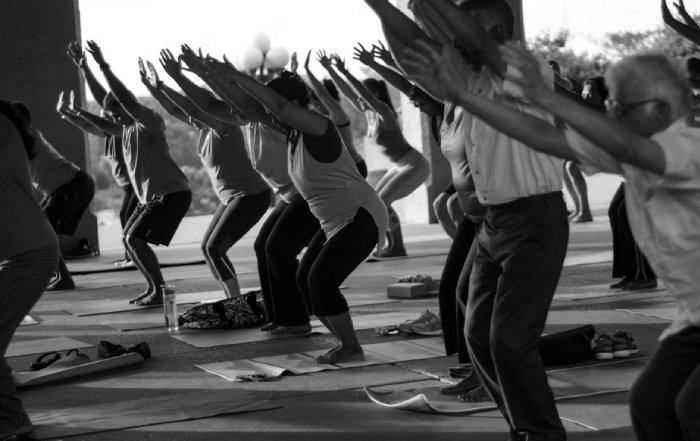The Evolution of Wellness Media in the Digital Age
The Digital Reimagining of Wellness Storytelling
In 2025, wellness media stands at a pivotal intersection of technology, culture, and commerce, reshaping how individuals around the world understand their bodies, minds, and lifestyles. What began as niche print magazines and specialist columns has evolved into a vast digital ecosystem in which platforms like WellNewTime curate experiences that blend health guidance, business insight, and lifestyle inspiration in ways that are interactive, data-informed, and deeply personal. This transformation has been accelerated by the rapid adoption of smartphones, the proliferation of social platforms, and the globalization of wellness culture, allowing audiences from the United States, the United Kingdom, Germany, Canada, Australia, France, and far beyond to access tailored wellness content in real time, whether they are reading about holistic wellness trends or exploring emerging innovations in digital health.
The digital age has also redefined what constitutes "wellness media." It now encompasses long-form journalism, short-form social content, podcasts, streaming video, interactive tools, and AI-powered experiences, with leading institutions such as the World Health Organization and the U.S. Centers for Disease Control and Prevention providing foundational health guidance that is amplified, interpreted, and contextualized by specialized outlets. As global audiences grow more discerning and more skeptical of unverified claims, platforms that can demonstrate true experience, expertise, authoritativeness, and trustworthiness have become essential gatekeepers, guiding readers through a crowded landscape of information, trends, and commercial offerings.
From Print Pages to Personalized Platforms
The shift from print to digital has not only changed distribution channels; it has fundamentally altered how wellness information is produced, validated, and consumed. In the early 2000s, wellness coverage in mainstream media was often limited to lifestyle sections and occasional health features, while specialist magazines focused on fitness, nutrition, or beauty catered to relatively narrow demographics. Today, readers expect a continuous stream of personalized, evidence-based insights that reflect their unique life stages, health conditions, and cultural contexts, whether they are browsing health-focused features or seeking nuanced reporting on global wellness news.
This personalization has been enabled by advances in data analytics and user experience design, allowing platforms to understand reading patterns, engagement behavior, and topic preferences in granular detail. Organizations such as Google have contributed to this shift by emphasizing experience and authoritativeness in search ranking systems, which in turn encourages publishers to invest in medically reviewed content, transparent sourcing, and clear author credentials. Audiences in regions such as Europe, Asia, and North America now encounter wellness information that is increasingly localized and culturally relevant, with coverage that reflects the different healthcare systems, regulatory environments, and social norms of countries from Japan and South Korea to Brazil and South Africa.
At the same time, the digital environment has multiplied the points of entry into wellness content. A reader might discover a long-form article on mental resilience via a search engine, subscribe to a newsletter featuring practical tips, follow a physiotherapist on social media, and listen to a podcast produced by a global health organization, all within a single day. This fragmented yet interconnected landscape places a premium on platforms like WellNewTime, which act as trusted anchors, curating and synthesizing information across wellness, fitness, business, and lifestyle domains in a way that feels coherent and reliable.
The Rise of Holistic Wellness Narratives
One of the most significant shifts in wellness media has been the move from a narrow focus on physical health to a more holistic understanding that encompasses mental, emotional, social, and environmental dimensions. Influential organizations such as the World Economic Forum have highlighted the economic and societal implications of well-being, while academic centers like the Harvard T.H. Chan School of Public Health have advanced research on the links between lifestyle, stress, and chronic disease. This has encouraged media outlets to move beyond simple diet and exercise advice toward more integrated narratives that connect personal choices with broader systems, from workplace culture to climate change.
In this context, platforms like WellNewTime are increasingly weaving together content on mindfulness practices, mental health literacy, sustainable living, and corporate wellness strategies, recognizing that readers do not experience their lives in silos. A professional in London or Singapore may be interested in both performance optimization and emotional resilience, while a reader in Canada or Germany may want to understand how environmental policies affect community health. Learning from sources such as the Mayo Clinic and the National Institutes of Health, responsible wellness media translate complex scientific findings into accessible narratives that encourage informed decision-making without resorting to oversimplification or sensationalism.
This holistic approach also extends to the way wellness media frames beauty and body image. Rather than promoting rigid ideals, leading platforms increasingly emphasize self-acceptance, diversity, and long-term health, drawing on insights from institutions such as the American Psychological Association to explain the psychological impact of unrealistic expectations. When WellNewTime covers beauty and self-care, it does so through the lens of overall well-being, acknowledging cultural differences across regions from Italy and Spain to Thailand and South Korea, and reinforcing the message that external appearance is only one dimension of a much broader wellness journey.
Trust, Evidence, and the Battle Against Misinformation
The digital age has brought unprecedented access to wellness information, but it has also unleashed a wave of misinformation, pseudoscience, and unregulated product claims that can endanger public health. Social media platforms and user-generated content sites have made it easy for unqualified voices to gain influence, and the rapid virality of wellness trends can outpace the slower, methodical process of scientific validation. In response, organizations such as the World Health Organization and the European Medicines Agency have intensified efforts to provide clear, accessible guidance, particularly in areas such as vaccination, mental health, and chronic disease prevention.
For wellness media brands seeking to build long-term credibility, this environment demands rigorous editorial standards and transparent processes. Outlets that aspire to be trusted partners in their readers' lives must prioritize expert authorship, clear disclaimers, and regular content updates to reflect evolving evidence. Many now collaborate with registered dietitians, licensed therapists, physicians, and exercise scientists, drawing on the expertise of institutions like the Cleveland Clinic or the National Health Service in the United Kingdom to ensure accuracy and relevance. On WellNewTime, this commitment to trustworthiness is visible in the careful selection of topics, the clear distinction between editorial content and advertising, and the emphasis on practical, realistic guidance that respects the reader's autonomy and diverse circumstances.
Misinformation is not only a matter of incorrect facts; it is also a question of context and nuance. For instance, wellness media must navigate the fine line between highlighting promising research and overstating results, especially in areas such as supplements, biohacking, and emerging therapies. Responsible platforms provide balanced coverage that includes potential risks, limitations of studies, and the importance of consulting qualified professionals, encouraging readers to explore more in-depth resources such as the Cochrane Library or PubMed when making complex health decisions. In this way, they position themselves not as final authorities, but as informed guides within a broader ecosystem of evidence-based knowledge.
The Business of Wellness Media and Brand Partnerships
As wellness has become a multitrillion-dollar global industry, media platforms have increasingly found themselves at the nexus of content, commerce, and community. Brands across sectors, from fitness technology to sustainable fashion, seek to align themselves with trusted wellness outlets to reach discerning audiences in markets such as the United States, Germany, Japan, and Brazil. Reports from organizations like McKinsey & Company and Deloitte have documented the rapid growth of the wellness economy, spanning segments such as nutrition, mental wellness, fitness, beauty, and workplace well-being, and highlighting the strategic importance of credible media partnerships for companies seeking long-term relevance.
For a platform such as WellNewTime, which covers business trends in wellness alongside lifestyle and health, this convergence of editorial and commercial interests requires careful governance. The most respected wellness media brands establish clear guidelines for sponsorships, affiliate relationships, and branded content, ensuring that any partnerships align with their values and do not compromise editorial independence. They also recognize that their readers are sophisticated consumers who expect transparency regarding commercial relationships and who can distinguish between genuine expertise and purely promotional messaging.
At the same time, wellness media can play a constructive role in elevating responsible brands and innovations that genuinely contribute to public well-being. By featuring companies that prioritize ethical sourcing, inclusive design, and scientific validation, platforms can help shape market behavior and encourage better industry standards. Sections dedicated to brands and innovation give readers insight into emerging players and technologies, from digital therapeutics and telehealth solutions to eco-conscious travel experiences, while also providing a space for critical examination of hype-driven trends that may not deliver on their promises.
Work, Careers, and the Professionalization of Wellness
Another defining feature of wellness media in the digital age is the growing attention to careers, skills, and the professional workforce that underpins the wellness economy. As demand for services such as massage therapy, health coaching, fitness training, and corporate wellness consulting has expanded across regions from North America and Europe to Asia-Pacific, there has been a parallel need for reliable information on qualifications, career pathways, and labor market dynamics. Organizations such as the International Labour Organization and the World Economic Forum have highlighted the importance of "good jobs" in the care and wellness sectors, emphasizing fair working conditions, training, and social protection.
In response, platforms like WellNewTime increasingly provide coverage that addresses both consumers and professionals, integrating career and jobs content alongside more traditional health and lifestyle features. This might include articles on the evolving role of wellness practitioners in integrated healthcare systems, analysis of remote and hybrid work arrangements in wellness businesses, or guidance for entrepreneurs seeking to launch sustainable wellness ventures. By spotlighting best practices and emerging opportunities across countries such as Canada, the Netherlands, Singapore, and New Zealand, wellness media help professionals navigate a rapidly changing landscape and encourage higher standards of service and ethics.
The professionalization of wellness also intersects with regulation and credentialing, as governments and industry bodies seek to protect consumers and ensure quality. Media outlets have a crucial role in explaining regulatory developments, such as changes in licensing requirements for massage therapists or new frameworks for digital health apps, translating legal and technical language into practical implications for practitioners and clients alike. Readers interested in massage and therapeutic practices, for example, increasingly look for guidance on how to assess practitioner qualifications and safety standards, particularly when traveling or engaging with cross-border services.
Global Perspectives and Cultural Diversity in Wellness
Wellness media in 2025 must be inherently global in outlook, reflecting the diverse traditions, health systems, and cultural attitudes that shape well-being in different regions. Practices such as yoga from India, traditional Chinese medicine, Nordic outdoor lifestyles, and Mediterranean dietary patterns have all influenced contemporary wellness discourse, while modern innovations from South Korea's beauty industry or Japan's approaches to longevity have captured worldwide interest. Institutions such as the OECD and the United Nations have underscored the importance of considering social determinants of health and cultural context when designing well-being policies and interventions, and leading media platforms are mirroring this complexity in their coverage.
For WellNewTime, serving a readership that spans Europe, Asia, Africa, South America, and North America means recognizing that a wellness routine in Stockholm may look very different from one in Bangkok or Cape Town, even if underlying aspirations for health, balance, and meaning are shared. This global sensibility is reflected in features that explore regional wellness trends, cross-cultural travel experiences, and the impact of global events on local communities, as well as in the selection of expert voices from diverse backgrounds. Readers can explore how wellness intersects with world events and global issues, understanding how geopolitical developments, economic shifts, and environmental changes influence access to care, mental health, and lifestyle choices in different societies.
Cultural sensitivity is also essential in avoiding the commodification or oversimplification of traditional practices. Responsible wellness media acknowledge the origins and philosophical foundations of modalities such as mindfulness, Ayurveda, or acupuncture, and consult scholars and practitioners who can provide nuanced perspectives. Resources from institutions like the National Center for Complementary and Integrative Health help contextualize these practices within evidence-based frameworks, while still respecting their cultural heritage and lived significance for communities around the world.
Technology, Innovation, and the Future of Wellness Experiences
Technology has become a central driver of innovation in wellness media, reshaping not only how content is delivered but also how wellness is experienced in daily life. Wearables, health apps, telemedicine platforms, and AI-driven coaching tools have created new data streams and interaction models, enabling more personalized and proactive approaches to health management. Organizations such as MIT and Stanford University have been at the forefront of research into digital health technologies, while global companies like Apple and Samsung have embedded wellness features into consumer devices that are widely used across markets from the United States and the United Kingdom to China and South Korea.
For wellness media, this technological shift brings both opportunities and responsibilities. Platforms like WellNewTime can help readers navigate the expanding universe of digital tools by offering critical reviews, comparative analyses, and expert commentary on issues such as data privacy, algorithmic bias, and clinical validation. Dedicated coverage of innovation and emerging trends allows readers to understand not only what is new, but also what is truly meaningful and sustainable in the long term. As virtual and augmented reality applications begin to influence areas such as guided meditation, physical rehabilitation, and immersive fitness, media outlets will need to evaluate their efficacy and accessibility, especially for populations that may be underserved by traditional healthcare systems.
Technology is also transforming the production side of wellness media itself. Advanced analytics enable publishers to understand which topics resonate in specific regions, from climate anxiety in Scandinavia to workplace burnout in major financial centers, informing editorial strategies that are both data-driven and human-centered. AI tools assist in content creation and personalization, but their deployment must be guided by strong ethical frameworks to avoid amplifying bias or sacrificing editorial judgment. In this environment, experience and expertise become even more critical differentiators, as readers look for human-curated perspectives that can synthesize data, research, and lived experience into coherent narratives.
Sustainability, Environment, and the Ethics of Wellness
As climate change, biodiversity loss, and resource constraints intensify, wellness media can no longer treat environmental issues as peripheral concerns. There is growing recognition that personal well-being is inseparable from planetary health, and that choices related to travel, consumption, and lifestyle have far-reaching ecological implications. Organizations such as the Intergovernmental Panel on Climate Change and the United Nations Environment Programme have documented the health risks associated with environmental degradation, from air pollution and heatwaves to food insecurity and mental distress, underscoring the need for integrated approaches that address both individual and collective well-being.
For platforms like WellNewTime, this means expanding coverage of environmental topics and sustainable lifestyles, helping readers understand how their wellness routines, beauty products, and travel habits intersect with broader ecological systems. Articles may explore the rise of regenerative tourism, the environmental footprint of fitness equipment, or the role of urban design in promoting active, healthy living. By highlighting credible resources on sustainable business practices and circular economy models, wellness media can support informed choices that align personal values with planetary boundaries, appealing to readers in environmentally conscious markets such as the Netherlands, Switzerland, Norway, and New Zealand.
Ethics also extend to questions of equity and access. Wellness media increasingly grapple with the reality that many wellness products and services remain inaccessible to large segments of the global population due to cost, geography, or systemic barriers. This awareness is prompting more critical coverage of affordability, inclusion, and social justice, as well as greater attention to public health infrastructure and policy. Readers interested in lifestyle and social trends are invited to consider how community design, public spaces, and social support networks contribute to well-being, moving beyond purely individualistic narratives.
Travel, Experience, and the Search for Meaning
Finally, the evolution of wellness media in the digital age is closely tied to changing patterns of travel and experiential consumption. Wellness tourism, encompassing everything from meditation retreats in Thailand to thermal spa experiences in Italy and hiking adventures in New Zealand, has grown rapidly as individuals seek immersive experiences that promise restoration, transformation, or a deeper connection to nature and culture. Organizations such as the Global Wellness Institute have tracked this growth, noting particularly strong interest in markets such as the United States, Germany, and Australia, as well as emerging destinations across Asia, Africa, and South America.
Media platforms like WellNewTime play a central role in shaping expectations and choices in this space, curating travel narratives that emphasize authenticity, respect for local communities, and alignment with personal values. Rather than presenting wellness travel as a luxury escape detached from everyday life, responsible outlets frame it as one dimension of a broader well-being journey, encouraging readers to integrate insights from their travels into sustainable daily practices. They also highlight the importance of ethical tourism, including fair labor practices, cultural sensitivity, and environmental stewardship, guiding readers toward experiences that support both personal renewal and community resilience.
In an age where digital media can make distant destinations feel immediate and accessible, the challenge for wellness publishers is to balance inspiration with realism, ensuring that aspirational imagery does not obscure the complexities of local realities or contribute to overtourism. By collaborating with local experts, NGOs, and research institutions such as the World Travel & Tourism Council, wellness media can offer nuanced, context-rich perspectives that honor the diversity of global wellness traditions and encourage mindful, responsible exploration.
The Role of WellNewTime in the Next Chapter of Wellness Media
As wellness media continues to evolve in the digital age, platforms that can integrate health, business, lifestyle, environment, and innovation into a coherent, trustworthy narrative will be best positioned to serve global audiences seeking clarity and depth. WellNewTime stands at this intersection, committed to delivering content that reflects real-world experience, draws on credible expertise, demonstrates clear authoritativeness, and earns the trust of readers from New York to London, Berlin to Singapore, and Cape Town to São Paulo.
By connecting wellness, health, news and analysis, and innovation within a single, thoughtfully curated environment, WellNewTime offers more than information; it offers orientation in a complex and rapidly changing world. As technology advances, global challenges intensify, and the definition of well-being continues to expand, the platform's mission is to remain a reliable companion for readers who want to live well, work well, and contribute meaningfully to their communities and the planet.
In the years ahead, the most influential wellness media will be those that treat their audiences not as passive consumers of trends, but as active partners in a shared project of understanding, resilience, and responsible progress. By grounding its work in experience, expertise, authoritativeness, and trustworthiness, and by maintaining a global yet deeply personal perspective, WellNewTime is helping to define what that future looks like in 2025 and beyond.










